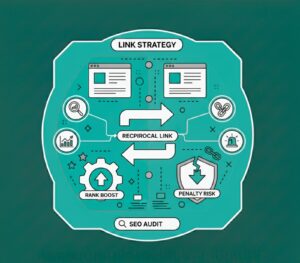How Content Repurposing is Effective for SEO and Engagement?
Blogs | Category
Written By: Lauren Davison
Introduction
Why create something new every single time? What if your best work could do more? Imagine a single idea reaching more people. It can work across different websites and apps. This is the power of Content Repurposing. It is not just recycling.
It is a smart way to breathe new life into your existing work. This strategy helps you connect with new audiences. It makes your website more visible on Google. It also saves you precious time and money. This blog will show you how this simple method can transform your marketing.
Table of Contents
What Is Content Repurposing?
Definition and Concept
Content Repurposing is the act of changing content into a new format. You keep the core message. You change the form. A long article can become a short guide. A slide deck can become an image carousel. Doing so helps your content reach people who prefer different media. It also helps you use the same idea more than once. This saves time. It also helps you test which formats work best.
Difference Between Repurposing and Reusing Content
Reusing means posting the same thing again. Repurposing means giving it a new form or angle. Reuse might be resharing an old tweet. Repurpose might be turning a tweet thread into a blog. Reuse can bore followers. Repurposing can add value. Repurpose keeps content fresh.
Benefits of Content Repurposing for Marketers and Businesses
Why should you bother? The benefits are huge. Content repurposing is key to content reuse strategies.
- Save time on content creation.
- Reach more people across platforms.
- Improve SEO by adding more searchable assets.
- Offer multi-channel content that fits user habits.
- Maximise content value from each asset.
How Content Repurposing Works
Identifying Evergreen Content
Evergreen content answers a question that stays relevant. Examples include how-to guides and core industry principles. These pieces work well for repurposing. Use analytics to find posts that keep getting visits. Mark them as high priority. These items are ripe for content reuse strategies. They will bring steady traffic when reshaped.
Choosing The Right Format For Repurposing
Not every format fits every topic. Ask two questions:
- What does my audience prefer?
- What fits the topic best?
For example, an infographic is perfect for visual ideas. If you have a step-based idea, create a short checklist. Similarly, use a podcast for stories. Pick the format that matches the audience and the channel.
Adapting Content For Different Channels
- Blog: Add depth, links, and clear headings to support SEO.
- Social: Use short hooks, images, and a clear call to action.
- Video: Open with a strong hook. Keep it short and tight.
- Podcast: Pick a clear topic. Use a friendly voice and a short intro.
Adjust length and tone for each channel. This helps your content perform. When you repurpose content for SEO, use keywords in the new form. Keep titles clear. Use meta tags and descriptions that match search intent. This makes each version work for both people and search engines.
Types of Content to Repurpose
Blog Posts into Infographics or Videos
A blog often has data and steps. These make neat visuals. Turn a list into an infographic. Similarly, turn a tutorial into a demo video. Infographics work well on social media, and videos work on YouTube and LinkedIn. Both can bring new viewers back to the original article.
Webinars into Social Media Snippets
A webinar holds many strong moments. Create those main moments into a 30–60 second highlight video. Add captions so viewers can watch with sound off. These teasers point people to the full session. They also help multi-channel content efforts by creating new short-form assets.
Ebooks into Blog Series or Guides
An ebook holds many ideas in one place. Break it into chapters for a blog series. Otherwise, make a step-by-step guide from a chapter. This method helps you maximise content value. It gives readers smaller bites and longer engagement.
Podcasts into Transcripts or Quote Graphics
Turn audio into text. Transcripts help SEO and make content skimmable. Pull short quotes and make images for social. These images can drive clicks and shares. This helps both readers and listeners find your work.
Steps to Successfully Repurpose Content
Audit Existing Content
Start with a list of what you have. Use tools or a simple spreadsheet. Note traffic, shares, and leads. Mark the pieces that performed best. These are your top candidates. Add tags for format, topic, and date. This makes planning easier.
These steps reflect content reuse strategies and help maximise content value.
Plan Content Formats and Channels
Make a simple plan. Pick the top items from the audit. Decide on the new format for each. Assign a channel. Set a deadline. Keep tasks small. Small tasks get done.
Optimise for Seo and Engagement
When you change the format, update SEO. Use keywords in titles and headings. Add internal links to related pages. Write clear meta descriptions. Use alt text for images. Add a short, strong intro to pull people in. These small steps make the new piece rank and engage.
Checklist for a Single Repurpose
- Does the piece still answer a common question?
- Is the content factually up to date?
- Which channel will get the best reach?
- What is the call to action for this version?
- Who will publish and when?
This checklist helps you repurpose content for SEO and for people. It keeps each new piece focused and useful.
Track Performance and Iterate
Publish the repurposed piece. Check metrics after a week and again after a month. Look at views, clicks, shares, time on page, and conversion. Learn from the data. Do more of what works. Drop what does not.
Common Mistakes to Avoid
Keep content reuse strategies in mind to avoid simple errors.
Over-Replication Without Value
Do not publish the same content with no change. This can confuse your audience. It can harm your brand. Always add value and updated facts, fresh visuals, or new examples. Make each version useful on its own.
Ignoring Platform-Specific Formats
Each platform has a style. Instagram favours images and short captions. LinkedIn favours longer posts and PDFs. YouTube needs a hook in the first 10 seconds. Adapt the format and the tone. This boosts engagement.
Failing To Update Outdated Content
Old stats and broken links hurt trust. When you repurpose, check for updates. Replace expired links. Fix broken data. Add current examples. Then republish. Fresh content ranks and converts better.
Bonus Tips for Effective Content Repurposing
Focus On Audience Needs And Platform Relevance
Know who you write for. What problems do they have? What answers do they want? Match the format to where they spend time. This makes your work more visible and more useful.
Use Automation Tools For Content Distribution
Automation can help with timing and reach. Use schedulers to post at the right times. Use templates to speed design. Do not automate the voice. Keep the tone human and aligned with your brand.
Combine Multiple Pieces Of Content Into Comprehensive Resources
Group related posts into one guide. Merge posts into a single long read. This can become a lead magnet. It can also rank well for broader keywords. Such bundles help you maximise content value.
Track Engagement To Identify High-Performing Content
Set clear KPIs. Watch shares, backlinks, and comments. High engagement points to what to repurpose next. Use this data to guide your content reuse strategies.
Conclusion
Content Repurposing helps you work smarter, not harder. It helps you repurpose content for SEO and for people. It also drives a stronger multi-channel content approach. Start with a clear audit to pick evergreen pieces. Use short workflows and small tests. Update facts and add fresh visuals. Use tools to speed design and distribution.
Over time, these steps help you maximise content value and lower your cost per lead. At Midland Marketing, we help brands unlock more value from every piece of content. Our experts create, repurpose, and optimise your content so it works harder across all platforms.
Start repurposing your existing content today with Midland Marketing to reach more audiences, save time, and boost your marketing ROI.
Frequently Asked Questions
How does repurposing help SEO?
Repurposing creates more indexed pages. More pages mean more chances to rank. Use keywords and clear titles. Add internal links to tie content together. Transcripts and guides help with long-tail searches.
What is a quick win for repurposing?
Turn a top blog post into a short video or an image carousel. This often takes little time and can bring a quick bump in traffic.
How do I keep content fresh when repurposing?
Update facts and add a new example. Change the headline. Add a fresh image. Small edits make content feel new.
Can small teams repurpose content well?
Yes. Small teams can do this with a simple plan. Pick one post per month and repurpose it into two formats. Use basic tools and clear steps. Focus on pieces that already perform well.
What metrics matter most?
Look at traffic, time on page, shares, and conversion. Also track backlinks and keyword ranking to see long-term SEO wins.
Should I create new content or repurpose old pieces?
Both have value. New content brings fresh ideas. Repurposed content makes the most of past wins. Balance both in your calendar.

Written by - Lauren Davison
Introducing Lauren – one of our content writers who has a flair for SEO and creative strategy!
With a Master’s Degree in Creative Writing, Lauren has niched down into SEO and content writing.
Outside of work, she loves watching the darts, reading and the pub on the weekend.
Want some more?
Latest Insights & News

Revolutionising Marketing: The Rise of Situational Content Strategies
Situational content strategies involve tailoring content to specific moments, contexts, or audience behaviours. By aligning content with real-time trends, seasonal needs, and user intent, brands can increase relevance, improve engagement, and strengthen SEO performance.

Smart Ways to Identify and Fill Content Gaps Fast: A Complete Strategy Guide
Content gaps refer to missing information, unanswered questions, or underserved topics in your existing content. Identifying these gaps helps you create targeted, high-value pages that improve search visibility, satisfy user intent, and outperform competitors.

Reciprocal Links in SEO: Do They Still Boost Rankings or Risk Penalties?
For the keyword “reciprocal links SEO,” focus on explaining how reciprocal linking works today. Reciprocal links are not harmful by default, but Google can flag excessive or manipulative link exchanges. To stay safe, only exchange links when they are contextually relevant, natural, and valuable to users.




